
Introduction
It is true that the World’s Parliament of Religions was a big event in Swamiji’s life that acted as the structural catapult launching him into prominence as Swami Vivekananda—the World Teacher. But that was his ‘external’ nature, an outward manifestation of his inner spiritual power—what people saw and heard. His ‘Buddha moment of enlightenment,’ or just his ‘Buddha moment,’ occurred in two places at Kanyakumari—first in Mother Kumari’s temple and then on what is now known as the Vivekananda Rock. Treating these events as a two-part continuum, this will go down as the most defining moment in his monastic life that elevated him from the level of self-actualization to self-transcendence. It was a totally ‘internal’ phenomenon, an innermost experience. This article attempts to describe what led to that moment, how Swamiji experienced it, and what happened in the aftermath. We know something about what led to it and what happened in the aftermath, but very little about its nature, because Swamiji was rather reticent about what he had experienced over those three days at Kanyakumari; for that, we have to rely on his biographers and our capacity for inductive or deductive imagination.
From the Himalayas to Kanyakumari
It all started in July of 1890 when Swamiji left the Baranagore Math with Swami Akhandananda and started for the Himalayas. His final words before he left was: ‘I shall not return until I acquire such realization that my very touch will transform a man.’1 He returned in January 1897, six and a half years later, to the Alambazar Math (to which the brother disciples had shifted in 1892) after fulfilling his promise; no matter how one looks at it, he transformed generations to come.
Esta historia es de la edición September 2019 de The Vedanta Kesari.
Comience su prueba gratuita de Magzter GOLD de 7 días para acceder a miles de historias premium seleccionadas y a más de 9,000 revistas y periódicos.
Ya eres suscriptor ? Conectar
Esta historia es de la edición September 2019 de The Vedanta Kesari.
Comience su prueba gratuita de Magzter GOLD de 7 días para acceder a miles de historias premium seleccionadas y a más de 9,000 revistas y periódicos.
Ya eres suscriptor? Conectar

Panchakroshi Parikrama of Varanasi
At the snow-capped Kailas, the Divine Lord Shiva was seated with Mother Parvati.
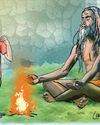
Gadai and the Monks
A fictional narrative based on incidents from the childhood of Sri Ramakrishna.
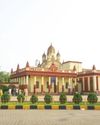
Chintayo momo maanosho Hori...
Sri Ramakrishna loved songs. There probably was no normal day when he did not sing some songs.
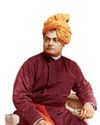
The Vedanta Vaccine
The world is still struggling under the impact of the pandemic due to Covid-19 for the last three years.

Chandrakirti's Chariot: Self in Madhyamaka Buddhism and Advaita Vedanta
The goal in Advaita Vedanta is the cessation of suffering and the attainment of true fulfillment. Suffering, according to this school, is due to ignorance of the true nature of the self and consequent erroneous identification with the body-mind.
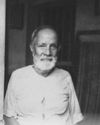
Reminiscences of Sargachhi
Question: यद्यदाचरतत श्रेष्ठसतत्तदरेवरेतरो जनिः। ‘Whatever a superior person does, others do the same thing!’ (Gita 3:21) – What does this statement mean?
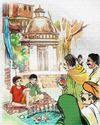
THE AUTUMN FESTIVAL
A fictional narrative based on incidents from the childhood of Sri Ramakrishna.

Bards of Guruvayur: Vilwamangalam II
Saints of India
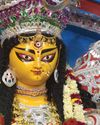
In the Universal Mother’s Divine Playground
Swami Vivekananda never taught the worship of Mother Kali. In a letter to Mary Hale he writes, “Kali worship is not a necessary step in any religion.
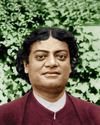
Swami Vivekananda: A Sportsman Par Excellence
In various books and articles, Swami Vivekananda has been called a spiritual leader, a prophet, a patriot, a social reformer, a philosopher, a yogi, a writer, an orator, an educationist, a musician, and so on.